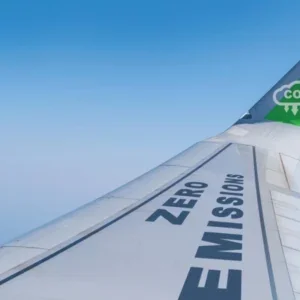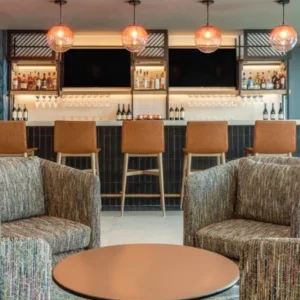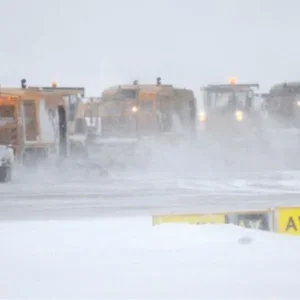Airport security is under scrutiny like never before. A simple Google search on London Heathrow yields several results on confirmed breaches, or close-call violations.
Reports from the past year include everything from an alleged airside security-pass scam, to threats made against the airport from a purported pro-Islamic State Twitter account. In February, a man even managed to evade several checkpoints and board a Cathay Pacific flight for Hong Kong without a passport or ticket. Heathrow is one such airport to have been conferred the tag of ‘aerotropolis’ – a concept, devised by US academic John Kasarda, by which an airport becomes a microcosm of urban life, as opposed to being a simple transport hub. If this is the case – and a third runway will fuel the argument – does Heathrow, with its network of retail outlets, restaurants and hotels, require the same level of police security as that found on London’s streets?
Perhaps! Today’s large international airports, such as Heathrow, must certainly establish strong working relationships with local law enforcement agencies in order to mitigate potential security threats.
Flying squad
Since becoming superintendent of the Metropolitan Police Service’s aviation command unit in April 2016, Andy Jones has had the responsibility of handling a number of security incidents. These, he says, aren’t solely related to terrorism. Over the past couple of years, in line with Heathrow’s bid to add another runway, it has had to contend with numerous environmental protests. Notably, last January, as part of the ‘Plane Stupid’ protest, 13 activists managed to cut through a fence and chained themselves together on a runway. In August, Heathrow also found itself blockaded by a ‘Black Lives Matter’ march.
Such attacks on airports – seen by protesters “as a symbol of affluence and capitalism, and therefore reflecting the same kind of imbalance in society” – require a special deftness in response from security teams.
“It depends on many things,” explains Jones. “Clearly, you have to facilitate peaceful and lawful protest, but when that steps over the boundary and becomes unlawful, or adversely affects people who are using the highways and airport for legitimate means, that’s when we have to step in.
“Contingency planning ensures that demonstrations are handled in a balanced way. People, of course, have a right to peacefully protest, but not to go beyond the bounds of acceptability.”
Airport security teams are often ill-equipped to handle such incidents by themselves, hence the need to build strong partnerships with law enforcement forces.
According to Jones, the relationship between Scotland Yard and Heathrow Airport Limited (the airport’s owner), is closer than it has ever been. With the airport security plan formalised through a risk assessment party and senior executive group respectively, it is Jones’s team’s job to “mitigate all the identified risks together”.
“We have a regular meeting structure with the airport authority, as well as joint intelligence and tasking meetings, so as to ensure that we maintain a fruitful communication at all times,” he says.
This channel of communication isn’t exclusive to the Met and Heathrow. It is also dependent on the input and participation of other law enforcement agencies, including the UK Borders Agency and Serious Organised Crime Agency. Special Branch, too. With so many players involved, what’s the secret to maintaining four-square communication? Jones is unequivocal in his response: “Effective networking and communication, and having an open and honest approach from each side.”
When posed the same question, Mats Paulsson, security director at Swedavia – the state-owned operator of Sweden’s ten major airports – agreed that transparency between the airport and police was a key factor.
“It’s about management, and respecting one another and our different responsibilities,” he explains. “You also need to be very clear on security responsibilities for the airport and where the police steps in. As long as that is clear, and there is good dialogue between the airport and the police, that’s more or less the key – that the airport and police can speak on different levels.”
Brief encounters
Of Swedavia’s stable of airports, Stockholm Arlanda is the largest, serving close to 25 million passengers in 2016. As a gateway to international travel for most Swedes, this requires it to have a stronger police presence than the group’s smaller airports.
Security personnel on site meet with police for daily briefings.
“We have briefings twice a day – one in the morning and one in the evening,” says Paulsson. “That’s for the patrolling officers and our security people working on the ground. Then, more or less on a weekly basis, we have one on the lower management level, and meet every two or three months on a more strategic level, and talk about how to work together when it comes to incidents – such as bomb threats and those kinds of issues – so our plans are synchronised.”
Lessons learned
For Swedavia – which also outsources some of its operations to Securitas for security checkpoints – the main threat facing its airports is the same as for any other aviation group in the world: terrorism. For European operators, this issue was thrown under the spotlight following last year’s bomb attacks at Zaventem Airport, Brussels, in which 30 people were killed and hundreds injured.
“It’s the same as for all airports in Europe, and it’s situated within the terminals – meaning attacks before the security checkpoints,” says Paulsson. “We have made a lot of improvements with regard to our checkpoints and upper areas of the airport before the security points [the Brussels attacks took place in the check-in area].”
In Paulsson’s opinion, the tragedy in Brussels in 2016 highlighted the danger of lone-wolf attacks, which can render protection and screening of potential threats an almost impossible undertaking.
The best an airport can do in mitigation is “put as many plans in place as possible, so we can respond as best as possible”, says Paulsson. One would assume one of the great balancing acts for airports in being prepared for such attacks is to provide a security service that is precision-tooled but unobtrusive. After all, how amenable are holidaymakers to being corralled in an airport’s confines by armed police? Or do they not have much choice in the matter?
“We don’t negotiate on this,” answers Jones. “While we work closely with Heathrow, it’s ultimately up to us how we manage the policing model and delivery plan. We have to judge against that. Sometimes, it will be unobtrusive policing, but sometimes there is a requirement for high-visibility reassurance policing. “There are occasions where we want an overt armed presence. As police managers, we have to make that judgement. The key decisions remain with us.”
“I think most passengers and staff expect to see security officers and police personnel – it makes them feel safe,” adds Paulsson. “That’s one part of the service that Swedavia offers – giving passengers that reassurance that they can have a safe flight when they fly from any of our airports.”
With open arms
This would suggest that, for the most part, post-9/11 passengers have become accustomed to the sight of armed officers at airports. It is part and parcel of international travel.
“Maybe it depends on the country,” continues Paulsson. “For example, in Sweden, it’s quite normal to see police officers carrying guns. Our security staff carry regular guns, as opposed to automatic weapons.
“It also depends on the passenger – some may feel safer seeing an automatic, but I suppose some may think, ‘Oh, there’s something going on here’. It really depends on the situation and the type of weapon that is being carried.”
In November, Swedish officials gave the green light for Stockholm Arlanda to participate in the US Customs and Border Protection’s Preclearance programme, which allows the US to screen for potentially unwelcome travellers overseas.
When it officially joins the scheme in early 2018, police and security teams at Arlanda, will be required to work together with their new US counterparts.
Clear dialogue and communications between all parties will be paramount; in offering the utmost protection to passengers, this is a given. Expect a few more firearms on show, too.






